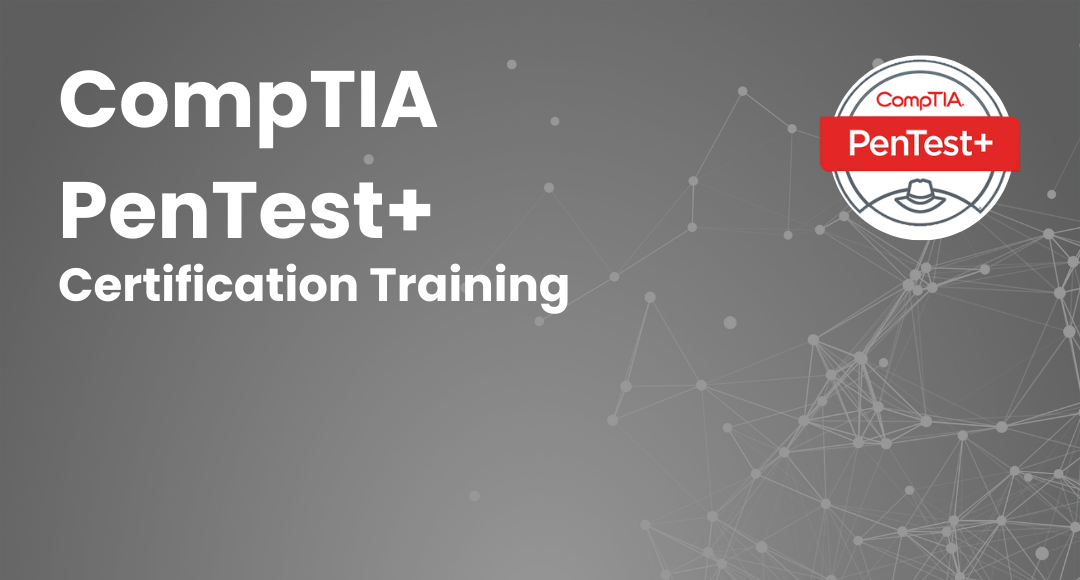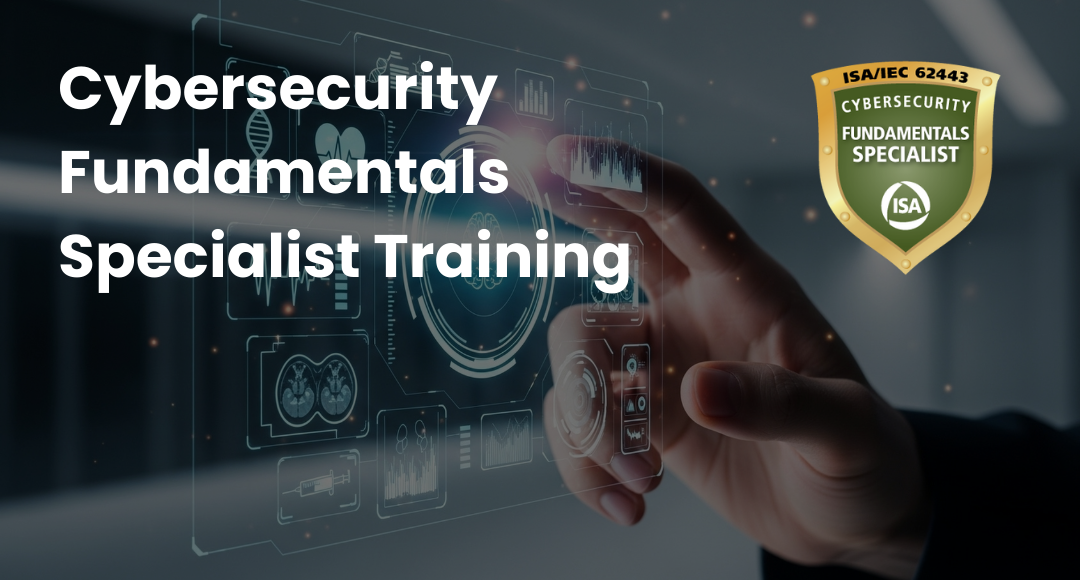What is a Cybersecurity Incident?-Types, Impact, Response Process and More
-
 By Niharika Chaurasia
By Niharika Chaurasia - Published on Jul 18 2023

Table of Contents
- Introduction
- What is a Cybersecurity Incident?
- Common Indicators of a Cybersecurity Incident
- Impact of Cybersecurity Incidents
- Understanding the Cybersecurity Incident Response Process
- The Role of Cybersecurity Incident Response Teams
- Best Practices for Preventing and Responding to Cybersecurity Incidents
- Conclusion
Introduction
In today's digital world, where cyber threats are rampant, understanding cybersecurity incidents is crucial for individuals and organizations alike. From malware attacks to data breaches, cybersecurity incidents can have severe consequences.
It’s necessary to understand cybersecurity incidents for individual and organizations handling sensitive data on daily basis to have a strong data security, system security and network security.
In this comprehensive guide, we will explore what cybersecurity incidents are, their types, and the steps to respond effectively. So, let's explore and empower ourselves with the knowledge to protect against these incidents.
What is a Cybersecurity Incident?
Cybersecurity incident occurs when malicious or unauthorised activity compromises the integrity, confidentiality, or availability of computer systems, data, and networks.
These incidents can have various forms such as, malware attacks, phishing, denial of service attacks, data breaches, insider threats, and ransomware attacks.
Understanding the different types is essential to recognize and respond to them effectively.

Malware Attacks: The Silent Invaders
Software of malicious nature is used in malware attacks to cause damage to the system. Examples of malware software are ransomware, viruses, worms, and trojans. Malware may enter computers through malicious downloads, corrupted websites, and email attachments.
Phishing and Social Engineering: Tricking the Unwary
Phishing is a kind of cyberattack in which attackers use deception to trick users into revealing sensitive data like passwords, credit card numbers, or social security numbers.
Denial of Service (DoS) Attacks: Disrupting the Flow
A targeted system or network is overloaded in a DoS attack so that users are unable to access it. Attackers overburden the targeted system with traffic, draining its resources and leading to a denial of service.
Data Breaches: Unveiling the Secrets
Unauthorized access to sensitive information such as personal data, financial, or intellectual property by an unauthorized individual, then a data breach occurs. The reasons for these breaches can be external or internal vulnerabilities.
Insider Threats: The Enemy Within
Insider threats involve individuals within an organization who misuse their access privileges to intentionally or unintentionally cause harm. This can include leaking sensitive information, stealing data, or compromising systems.
Ransomware Attacks: Held Hostage
Ransomware attacks encrypt victims' data and demand a ransom in exchange for its release. These attacks can paralyze businesses and individuals, impacting operations and potentially causing significant financial losses.
Common Indicators of a Cybersecurity Incident
To identify a cybersecurity incident, it is important to recognize common indicators that something is amiss. These indicators can include:
- Unusual network traffic or system behavior
- Unauthorized access attempts
- Anomalies in log files or system logs
- Unexpected changes in user privileges
- Presence of unfamiliar files or programs
- Unexplained system crashes or slowdowns
Being vigilant and monitoring these indicators can help in detecting and responding to incidents promptly.
Impact of Cybersecurity Incidents
The impact of cybersecurity incidents can be far-reaching, affecting individuals, organizations, and even economies. Some common consequences include:
- Financial losses due to data theft, legal penalties, and business disruptions.
- Damage to reputation and loss of customer trust.
- Regulatory non-compliance leading to fines and legal consequences.
- Compromised personal and sensitive information, risking privacy.
- Downtime and operational disruptions.
- Intellectual property theft and loss of competitive advantage.
Understanding the Cybersecurity Incident Response Process
In the face of a cybersecurity incident, having a well-defined incident response process is crucial. This process enables organizations to efficiently handle incidents, minimize damage, and restore normal operations. Let's explore the steps involved in the incident response process.
- Preparation: Ready, Set, Go!
Preparing for incidents involves establishing an incident response team, defining roles and responsibilities, and developing an incident response plan. This includes creating an inventory of critical assets, conducting risk assessments, and implementing preventive measures.
- Identification and Classification: Spotting the Signs
It is necessary to identify and classify an incident in order to understand the nature and broadness of the incident. To get to know about the cause and extent of the incident, evidence gathering, log analysis, forensic investigations, are all necessary.
- Containment: Stop the Spread
Containment aims to prevent further damage by isolating affected systems, removing malicious code, or disconnecting compromised devices from the network. This step may involve blocking network access, disabling compromised accounts, or quarantining affected systems.
- Eradication: Eliminating the Threat
Eradication involves removing the root cause of the incident. This may include patching vulnerabilities, updating security controls, or removing malware from systems. Thoroughly investigating the incident helps prevent future occurrences.
- Recovery: Bouncing Back
Recovery focuses on restoring affected systems and data to their normal state. This includes restoring backups, rebuilding systems, and reconfiguring security measures. Organizations should also evaluate lessons learned and update incident response plans based on the incident's findings.
- Lessons Learned and Post-Incident Analysis: Growing Stronger
After an incident, it is vital to conduct a post-incident analysis to identify areas for improvement. This involves reviewing incident response procedures, updating security measures, and providing additional training to enhance incident response capabilities.
The Role of Cybersecurity Incident Response Teams
Cybersecurity incident response teams play a critical role in handling and mitigating the impact of incidents. These teams consist of skilled professionals who are responsible for detecting, responding, and recovering from cybersecurity incidents. Let's explore the key roles within an incident response team.

Incident Response Manager: Orchestrating the Response
The incident response manager oversees the entire incident response process, coordinating the team's activities, and ensuring effective communication with stakeholders.
Forensic Analyst: Investigating the Evidence
The insights of the incidents cause and impact is analyzed by forensic analysts by collecting and examining digital evidence related to incident. They are experts in identifying the attacker’s techniques and tactics.
Incident Handler: Taking Immediate Action
Incident handlers are responsible for containing and mitigating the incident. They work closely with technical teams to implement appropriate measures to stop the incident's progress and protect the organization's assets.
Communication Liaison: Keeping Everyone Informed
The communication liaison ensures clear and timely communication with internal and external stakeholders. This includes informing senior management, legal teams, customers, and regulatory authorities, ensuring transparency and managing the organization's reputation.
Best Practices for Preventing and Responding to Cybersecurity Incidents
To strengthen cybersecurity defenses and effectively respond to incidents, organizations should follow these best practices:

- Implementing Strong Security Measures
Deploy robust security controls, including firewalls, intrusion detection systems, and antivirus software, to protect against known threats. Regularly update and patch software to address vulnerabilities.
- Regular Security Assessments and Vulnerability Management
Conduct regular security assessments to identify weaknesses and vulnerabilities in the organization's systems. Implement a vulnerability management program to promptly address and remediate identified vulnerabilities.
- Employee Training and Awareness Programs
Educate employees about cybersecurity best practices, including identifying and reporting suspicious activities, practicing safe browsing habits, and handling sensitive information securely. Regularly conduct cybersecurity awareness training sessions to reinforce knowledge.
- Incident Detection and Monitoring Systems
Implement robust monitoring systems to detect and alert on potential security incidents. This includes intrusion detection systems, security information and event management (SIEM) solutions, and log analysis tools.
- Incident Response Planning and Drills
Develop an incident response plan that outlines the steps to be taken during a cybersecurity incident. Regularly test and update the plan through incident response drills and tabletop exercises.
- Engaging Third-Party Experts
Consider engaging third-party cybersecurity experts for vulnerability assessments, penetration testing, and incident response support. Their expertise can provide valuable insights and help enhance the organization's security posture.
Conclusion
It is essential to understand the types of cybersecurity incidents that occurs, how they affects organisations and people and how to respond to such threats. The best practices of cybersecurity, implementing strong security measures, and by building resilient incident response capabilities, can help organizations to protect their data, systems, and reputation in better way. Stay vigilant, stay informed, and stay safe in the dynamic landscape of cybersecurity.
At Sprintzeal, we offer comprehensive cybersecurity training and certification courses to equip professionals with the knowledge and skills to tackle today's cyber threats effectively. Visit Sprintzeal IT security course page to explore our courses and take your cybersecurity expertise to new heights.
To explore more similar cybersecurity topics and gain more knowledge about cybersecurity field head to the IT security blogs.
Subscribe to our Newsletters
Popular Programs
CISSP® - Certified Information System Security Professional
Live Virtual Training
- 4.3 (964 + Ratings)
- 62k + Learners
CISA® - Certified Information System Auditor
Live Virtual Training
- 4.8 (426 + Ratings)
- 16k + Learners
CISM® - Certified Information Security Manager
Live Virtual Training
- 4.4 (200 + Ratings)
- 31k + Learners
CCSP® - Certified Cloud Security Professional
Live Virtual Training
- 4.9 (964 + Ratings)
- 49k + Learners
Trending Posts
How to Get Cyber Essentials Certified
Last updated on Apr 5 2023
Cyber Security Analyst - How to Become, Job Demand and Top Certifications
Last updated on Feb 3 2023
Why Cybersecurity Training Should Be Part of Every Professional's Career Plan
Last updated on Jul 24 2025
What is CISSP? – Everything about CISSP Certification Explained
Last updated on Dec 2 2022
Enhancing Safety and Competence in Today's Workplace
Last updated on Apr 8 2025
How to Stay Cyber-Secure in Work and Personal Life (Tips and Practices)
Last updated on Oct 23 2024
Categories
- Other 69
- Agile Management 47
- Cloud Computing 56
- Project Management 173
- Big Data 66
- Business Management 88
- Digital Marketing 78
- IT Service Management 29
- Programming Language 58
- AI and Machine Learning 77
- IT Security 112
- Quality Management 78
- IT Hardware and Networking 26
- Microsoft Program 4
- Workplace Skill Building 13
- Risk Management 9
- Information Security 8
- Leadership and Management 9
- Corporate Training and Development 1
Trending Now
Top 5 Compelling Reasons To Get A Cyber Security Certification
ebookHow to Become IT Security Expert with CISSP Certification
ebookTop 20 Reasons You Should Get a CISSP Certification
ebookWhat is CISSP? – Everything about CISSP Certification Explained
ebookPass CISSP Exam - How to Clear CISSP Exam in First Attempt 2026 (UPDATED)
ebookCISSP Certification – Top 25 Career Benefits in 2026
ebookCybersecurity – Everything You Need to Know About it
ebookUpdated Google Certification Training Course list 2026
ArticleWhich Certification is best for Cybersecurity?
ebookWhich Cybersecurity Certification Should I Get First?
ebookCysa+ certification – Should you get it?
ebookList of Top Security Certifications
ArticleEasiest Security Certification to Get
ebookCISM certification cost and career benefits
ebookCybersecurity Fundamentals Explained
ebookISACA Certifications List 2026
ebookCareer Benefits of CISM Certification in 2026
ArticleList of Top Information Security Certifications in 2026
ebookCISM certification cost details
ArticleMitigate the Cyber-Attack Risks with Best Cyber Security Protocols
ebookCybersecurity Interview Questions and Answers 2026
ebookTop Cybersecurity Software Tools In 2026
ebookInformation Security Analyst - Career, Job Role, and Top Certifications
ebookCyber Security Analyst - How to Become, Job Demand and Top Certifications
ebookWhat is Data Security - Types, Strategy, Compliance and Regulations
ebookData loss Prevention in Cyber Security Explained
ebookCybersecurity Controls Explained in Detail
ebookCybersecurity Framework - A Complete Guide
ebookWhat is Cryptography - A Comprehensive Guide
ebookData Leak - What is it, Prevention and Solutions
ebookCybersecurity Career Paths Guide
ebookFuture of Cybersecurity - Trends and Scope
ebookCyber Security Careers and Outlook - 2026 Guide
ebook5 Cybersecurity Predictions in 2026 - Trends and Challenges
ebookScope for Cybersecurity in 2026 - Latest Update
ebookEthical Hacking Career: A Career Guide for Ethical Hacker
ebookApplication Security: All You Need To Know
ebookCybersecurity Roles - Top Roles and Skills to Consider in 2026
ebookHow to Get Cyber Essentials Certified
ebookTop 10 Cyber Security Threats and How to Prevent Them
ebookTop 10 Network Scanning Tools of 2026
ebookCyber Incident Response Plan: A Comprehensive Guide
ebookInformation Assurance Careers - Exploring Career Paths
ebookWhat is the Department of Defense (DoD) Directive 8140
ebookCybersecurity Mesh Architecture: What It Is and How to Build It
ebookWhat is Threat Modeling? Methodologies, Types, and Steps
ebookWhat is Digital Forensics? Types, Process & Challenges
ebookInformation Assurance Model in Cybersecurity
ebookHow to Become an Information Security Analyst Salary, Skills, and More
ArticleList of Top Department of Defense (DoD) Approved 8570 Certification Courses
ebookTop 5 Ransomware Attacks to Watch Out for in 2026
ebookJob Prospects for DoD Certified Professionals: A Pathway to Success in cybersecurity
ebook10 Biggest Data Breaches of the 21st Century
ebookCyber Security Planning - A Detailed Guide for Risk Mitigation
ebookWhat is Cybercrime? Exploring Types, Examples, and Prevention
ebookRecent Cyber Attacks & Data Breaches in 2026
ebookCybersecurity Strategy: Building a Strong Defense for Business
ebookCybercrime Impacts On Business: 6 Major Effects
ebook5 Types of Cyber Attacks You Should Be Aware of in 2026
ebookCloud Cyber Attacks: Causes, Types, Prevention and Protection
ebookCloud Malware: Types of Attacks and Security Measure
ebookCyber Attack Statistics and Trends to Know in 2026
ebookList Of Top Cybersecurity Threats In 2026
ebookSafeguarding Digital Domain: 10 Most Common Cybercrimes
ebookDemystifying Cloud-Based Cyber Attacks: A Comprehensive Guide
ebookPrevent Cyber Attacks: Strategies to Protect Your Digital Assets
ebookList of Top 10 Cybersecurity Careers in 2026
ebookTop 20 Cybersecurity Trends to Watch Out for in 2026
ArticleHow to Become Cybersecurity Engineer
ArticleUnderstanding Risk assessment in audit planning
ArticleFundamentals of Risk-Based Auditing: A Strategic Framework
ArticleRisk-based Audit Planning Guide for Beginners
ebookTop 8 Types of Cybersecurity Jobs and Salary Insights
ArticleA Comprehensive Guide to Building Risk-Based Internal Audit Plan
ArticleRisk-Based Internal Auditing Approaches: 7 Steps to Explore
ArticleCompTIA Security+ 601 vs. 701: Understanding Key Differences
ArticleWhy and How to Perform a Risk-Based Internal Audit
ArticleRisk-Based Auditing Techniques Explained
ebookEvolving Cyber Threats and Vulnerabilities in Cybersecurity Risk Management
ArticleWhat Is Secure Access Service Edge (SASE)?
ArticleHow to Stay Cyber-Secure in Work and Personal Life (Tips and Practices)
ArticleIBM Data Breach: Is IBM Really Breach-Proof?
ArticleTarget Cyber Attack: Key Lessons from the 2013 Data Breach
ArticleLinkedIn User Data Protection Explained
ArticleCanva Data Breach: Best Lessons for Users and Businesses
ArticleHow Did Capital One Respond to Their Major Cyber Incident?
ArticleWhat Innovative Measures Did Reddit Take to Protect User Data?
ArticleHow Does Slack Respond to Security Challenges?
ArticleTwitch Data Breach: Response, Changes, and Key Takeaways
ArticleGuess What Google Did When a Employee Breached Their Firmware
ArticleEthical Hacking Tools: Best Ones for Cybersecurity in 2026
ArticleWhat Happened When Cisco Faced a Cyber Incident?
ArticleWhat Sony Did to Rebuild Trust After a Major Cyberattack
ArticleHow to Handle a Data Breach? Learn from Microsoft!
ArticleCybersecurity Mesh: A New Approach for Security Design
ArticleHow Target Turned a Cyber Crisis into a Lesson for All
ArticleDropbox Data Breach: What Companies Can Learn from It
ArticleHow JPMorgan Chase Strengthened Security After Facing Cyber Threats
ArticleThe Future of Online Security: Trends to Watch in 2026
ArticleLatest Trends in CyberSecurity
ArticleTop 12 Cyber Security Apprenticeships with High Earning Potential in 2026
ArticleEnhancing Safety and Competence in Today's Workplace
ArticlePrivacy at Your Fingertips: How iPhone Users Can Use Tools Securely
ArticleAge Matters: Understanding the Generational Gap in Online Safety Education
ArticleCybersecurity 101: Why Cybersecurity is the Hottest Career Right Now
ArticleWhy Cybersecurity Training Should Be Part of Every Professional's Career Plan
ArticleHow to Protect Your Data When Traveling to Countries Like Malaysia?
ArticleTop Online Master's in Cybersecurity Programs for Working Professionals
ArticleHow AI Detectors Strengthen Cybersecurity in Modern Networks
ArticleHow to Become a Cybersecurity Engineer: Step-by-Step Career Guide
ArticleWhy Certification in Risk and Compliance Is Critical in Today’s Financial World
Article


















